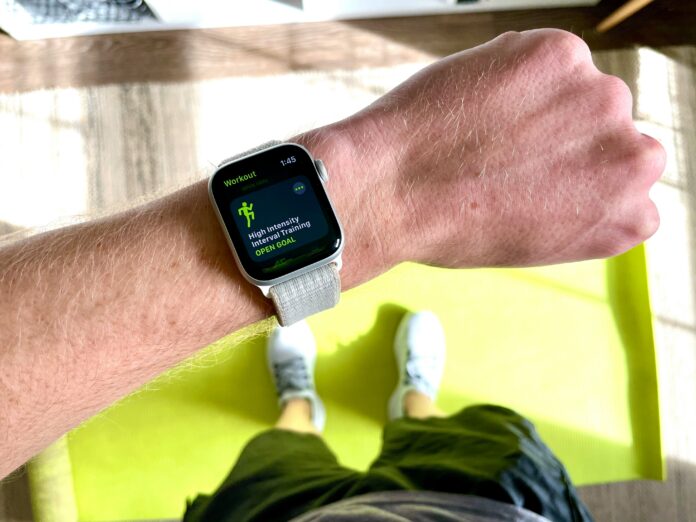Wearable activity trackers have rapidly become a staple for fitness enthusiasts, with devices like the Fitbit, Apple Watch, and Oura ring gracing the wrists of millions. These gadgets, known for monitoring heart rate, step count, and sleep patterns, are now being explored for their potential to detect diseases. A recent study by the University of South Australia suggests that these consumer-grade devices could play a significant role in early disease detection, particularly for conditions like atrial fibrillation, which is linked to strokes, and even COVID-19.
The research, which reviewed 28 studies involving 1.2 million participants, provides compelling evidence that wearable technology could be more than just a fitness aid. The findings reveal that these devices could accurately identify COVID-19 status in 88 out of 100 cases, a detection rate comparable to rapid screening tests. They could also detect atrial fibrillation in 87 out of 100 cases, aligning closely with the accuracy of tests conducted by medical professionals. Furthermore, the trackers were found to accurately identify falls in 82 out of 100 cases, showcasing their potential in monitoring a range of health-related events.
Originally designed to track physical activity and exercise performance, wearable technology has advanced significantly. Modern devices can measure a variety of health metrics, including blood pressure, heart rate, oxygen levels, sleep quality, skin temperature, hydration, and even stress levels. This expansion in functionality is opening doors to their use in monitoring broader health conditions.
Dr. Ben Singh, the lead researcher from UniSA, believes that wearable activity trackers could revolutionise how medical conditions are detected and managed. “As healthcare budgets continue to soar, the need for cost-effective interventions that reduce healthcare costs and improve patient outcomes has never been more urgent,” Dr. Singh states. His research suggests that wearable devices like Fitbits and Apple Watches have significant potential to detect COVID-19 and heart conditions in real-world settings, offering a new avenue for personal health monitoring.
Dr. Singh highlights that wearable trackers empower individuals to take a proactive approach to their health. They enable users to detect health issues in real-time, allowing them to respond swiftly to any concerns and potentially prevent more severe health problems. This immediate access to health data could be particularly beneficial for individuals at risk of conditions that require ongoing monitoring, such as cardiovascular diseases.
However, while the prospects are promising, there is still room for improvement and expansion. Professor Carol Maher, a co-researcher at UniSA, notes that the true potential of wearable activity trackers is yet to be fully realised. “The beauty of wearable activity trackers is that they provide an easy and convenient way for people to monitor real-time aspects of their health and wellbeing,” she explains. “But their application must encompass a greater number of health conditions and demonstrate greater results across diverse populations before they can be considered for clinical practice.”
The research suggests that while wearable trackers are already providing valuable health data, there are still challenges to overcome before they can be widely adopted in clinical settings. These include demonstrating their effectiveness across a broader range of health conditions and populations, ensuring the accuracy of data collected in various environments, and addressing privacy concerns related to the use of personal health information.
Wearable technology is not without its critics. Some argue that while these devices can provide a wealth of data, they may also lead to unnecessary anxiety or self-diagnosis among users. There are concerns about the accuracy of some of the measurements provided by consumer-grade devices, which are not subject to the same rigorous testing as medical equipment. Additionally, the use of personal health data by tech companies raises privacy issues that must be carefully managed.
Despite these concerns, the potential benefits of wearable technology in health monitoring are hard to ignore. With continued research and development, these devices could become a valuable tool in detecting and managing a wide range of health conditions. As technology continues to advance, wearable activity trackers could play an increasingly important role in personalised healthcare, offering users a convenient and cost-effective way to stay on top of their health.
Looking ahead, the integration of wearable activity trackers into mainstream healthcare could lead to more personalised treatment plans and preventative care strategies. As these devices become more sophisticated, they could provide healthcare professionals with real-time data that helps in the early diagnosis and management of diseases. This could lead to more targeted interventions, better patient outcomes, and potentially lower healthcare costs.
For now, wearable activity trackers represent an exciting development in the world of health technology. While there is still work to be done to fully realise their potential, the evidence suggests that these devices could be a valuable addition to the healthcare toolkit, providing individuals with a powerful way to monitor and manage their health. Whether you’re a fitness enthusiast or someone looking to take control of your health, wearable technology offers a glimpse into the future of personalised healthcare.


